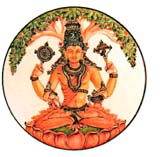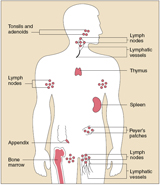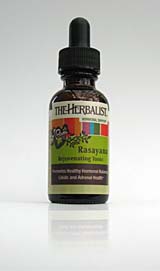Āyurveda
Immunity in Āyurveda
Editor's note
This article discusses briefly the facts that Āyurveda since time immemorial believed that the way to eradicate infections was to enhance the immunity. For this purpose, many methods were used as enumerated.Immunity and infection
Immunity or body resistance is paramount in health as it is the most important factor that prevents any virulent or mild disease (1). Any interaction, alteration or aggravation in the functional entities which break the normal physiological barriers leads to the production of diseases (2). This alteration of the physiological pathway is due to the cumulative effects of the interaction between the deranged functional entities and the body (3). Extrinsic or intrinsic factors, qualitatively quantified in multiple factorials, are basically responsible for the production of diseases, according to Āyurveda (4). The symphony of sequences resulting in pathology is accelerated through the breakdown of bodily resistance as a result of an interaction with micro-organisms (5). Transmission of micro-organisms into the body affects a particular organ or anatomical structure resulting in the modulation of its intrinsic pathways, thereby altering the physio-biochemical factors (6). Ultimately the body immunity as a whole is depleted (7).The immune system is programmed to protect the body from a variety of infections right from birth. The activity of different organ systems and thereby the immunity also varies with age (8). Changes in the environment can also result in immuno-depression which is manifested through different characteristics (9). Usually, early infections (called the ‘intermediate state’) are transient and self-healing. Virulent infections break the intermediate stage and are triggered by the transmission of putrefying pathogens (10). The source of infection belongs to a wide range of factors (11) but categorical comprehension of the infective pathology is dependent upon the study of immuno-modulation in a specific way (12).
Immuno-modulation by Āyurveda
Bhūtābhisanigaja jvara (13), graha roga (14), rājayakshmā (15), kushtha (16), etc. are due to micro-organisms like viruses, bacteria, fungi respectively, causing pathogenesis affecting the nerves, skin, etc. with neuro-physio-pathological characteristics. The infective organisms get embedded in the process of the disease and result in localised or general abnormalities (17). Micro-organisms create anomalies in the respective organs and become virulent as they multiply due to an overload on the immune system (18). The immunological systems can be detoxified by administration of the specific immuno-modulation therapy (19).
Rasāyana
Rasāyana enhances immunity (20) and is effective if the system is purified or detoxified (21). Administration of the rasāyana drug adds to the process of longevity through immuno-modulation, thereby resisting the disease process (22) or even arresting the production of diseases (23) caused by infection. Rasāyana enhances immunity at the micro or macro level and acts through the molecular biogenesis in the form of qualitative regeneration of the respective tissues (24). Rasāyana is used to prevent infection and arrest infective diseases by promoting the vital essence of affected body tissues and breaking the intensity of the processing of interaction between the micro-organism and the body (25).Single or compound drugs are used in a fixed dose or in increasing followed by decreasing doses. This is well described in the Āyurvedic texts for mitigating particular diseases (25). The significance of the use of rasāyana has assumed a greater importance in the case of serious and fatal infections in immuno-compromised patients (27). The use of Embelica officinalis and Samecarpus anacardium enlighten the view of immuno-promotion and immuno-suppression respectively in different infections.
Almost all infective diseases can be prevented by the use of achāra rasāyana as it regulates the neuro-transmitters to maintain the psychological threshold so that individuals can keep themselves alert (28). Simultaneously the use of seasonal fruits, drink(s) and aphrodisiac drugs can prevent infections and the administration of madhutailika and yapanbasti are known to increase the IgG and IgM levels (29).
Conclusion
To summarise, infections produce disease in our bodies when the immunity goes down which can be arrested through immuno-modulatory drugs in the testified form.
References
1. Ca.su. 28/7.
2. Ca.Su. 7/42.
3. Ast. Hr. Su 11/36.
4. Ca.Ni. 4/4.
5. Cakrapani on Ca. Ni. 4/4.
6. Ca. Su. 20/12.
7. Kumar & Clark 4th Ed? chapt.
8. Harrison.
9. Kumar & Clark.
10. Kumar & Clark.
11. Ca. Su. 7/51.
12. CakrapANi on Ca.Su. 28/7.
13. Ca. Ci 3/115.
14. Ca. Ci. 9/20.
15. Ca. Ni. 6.
16. Ca. Ni. 5.
17. Ca.Ci.15/36-37.
18. Ca. Su. 11/58.
19. Ca. Ci. 1/1/28.
20. Ca. ci. 1/1/5-6.
21. Ca. ci. 1/1/24.
22. Ca. Ci. 1/1/13.
23. Ca.Ci. 1/1/5-6.
24. Ca.Ci. 1/2/12, Cakrapani on Ca. Su.4/8.
25. Ca.Ci. 3/318.
26. Ca. Ci. 1/3/30-35.
27. Ca.Ci. 1/ 1-4 pAda (sequence).
28. Ca. Ci. 1/4/33-35.
29. Dutta, Saumi : The effect of madutailika vasti in stress induced rats 2006.
Dr. Asit Kumar Panja , M.D., D.Y.N., Ph.D. is Lecturer at the Dept. of Basic Principles, National Institute of Ayurveda, Jaipur.
Share with us (Comments, contributions, opinions)
When reproducing this feature, please credit NAMAH, and give the byline. Please send us cuttings.




